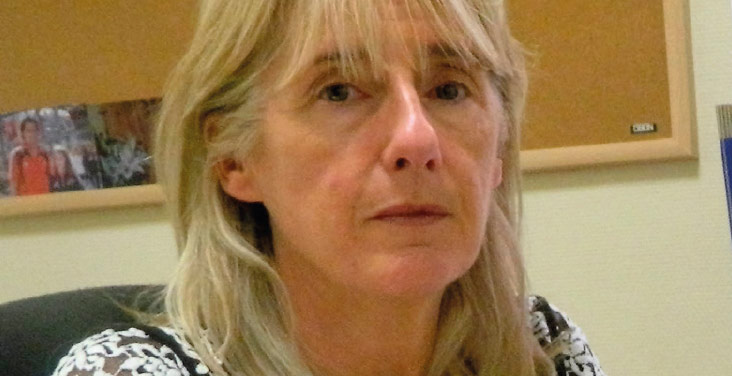
Mater Private Hospital in Dublin, Ireland is part of the Mater Private Group that provides private healthcare in Dublin, Cork, Limerick and Liverpool. The Group prides itself on providing some of the most technologically advanced treatment options in the country and has pioneered many major developments in the delivery of healthcare in Ireland.
Therese O’Sullivan is the Pathology Laboratory Manager at the hospital and was tasked with the implementation of a speech recognition system across Pathology back in May 2013. At the time, the hospital were using digital dictation and in some places even analogue tapes. It was decided by the Senior Management Team that speech recognition was needed to improve turnaround times, achieve cost savings and manage increasing workloads.
The pathology team at the Mater Private Hospital consist of 18 staff – five consultants, seven medical scientists and four medical secretaries. The Pathology Laboratory at the Mater Private is a multi-disciplinary laboratory that includes:
- Clinical Biochemistry/Endocrinology
- Haematology/Coagulation
- Blood Transfusion
- Histopathology
- Immunology
- Microbiology
- Virology.
The team use the WinPath system provided by CliniSys as their Laboratory Information Management System (LIMS). As G2 Speech already had a strong relationship with CliniSys the company recommended the speech recognition engine provided by G2 Speech, as their preferred supplier.
Mater Private conducted rigorous research into various reference sites including a site visit to Barts Health NHS Trust’s Pathology Department to hear about how the Trust were working with G2. The team at Barts Health NHS Trust were extremely positive about the software, particularly the use of interactive speech recognition. This filled the Mater Private with the confidence they needed to make the next step towards working with G2 Speech.
Before introducing the system Therese and her team met with G2 Speech project and applications consultants to construct a project plan. The plan addressed key tasks and deliverables, roles and responsibilities, timescales, milestones, communications and SLAs.
Therese worked closely with her assigned G2 project manager thoroughout the training and implementation process. The hospital decided to implement back-end speech recognition in the first instance in May 2013. The hospital uses Philips SpeechMikes and Jabra headsets for dictating. When it was initially implemented the speech engine had a few mistakes and misinterpretations of words – this was part of the natural learning curve for the system. After time though, clinicians became used to dictating in a clear, concise manner and they saw the recognitions full potential.
THE DEPARTMENT ARE NOW TURNING AROUND DOCUMENTS IN LESS THAN 24 HOURS EVEN WITH THEIR HUGELY INCREASED WORKLOAD.
Therese explained how the recognition just clicked, it’s like someone flicked a switch. The system just got it and the recognition rates improved significantly. We decided to move to front-end recognition and now there’s pretty much no changes required. It made things so much simpler with the use of templates and auto-texts too. As we use a lot of repeated sections of text – this made life much easier. With one simple command, chunks of text would be inserted.
Aisling O’Connor, Head of Medical Scientists in Histopathology spoke about her experiences, “I can remember the times when we used to write up paper templates for each case. We required a 1 WTE person a day just writing. There were spelling issues and bad handwriting issues on top of that too. Now, with the new software, we do need to think through what you’re going to say before the dictation and remember to speak clearly and concisely but it’s much better.”
Therese spoke about her experiences of working on the project, “I would have to say that if you’re considering implementing the software – make sure that you have a dedicated project manager to handle the deployment from start to finish. It was a big undertaking and I learned a lot about different people’s areas of work. I wouldn’t go back and now people using the solution would be lost without it.
I would have liked to have had more time to fully understand the system and its nuances. It’s important to have buy in from your teams and it’s important to be proactive and embrace the new technology.
In the first instance, post implementation, we had a temporary reduction in consultants and an increase in workload but managed to keep up with demand. Previously, before using the G2 Speech solution, we were working on around 9,000 cases a year – there are two dictations per case so around 18,000 dictations a year. Since using the system our workload has increased (with an intake of cases from Cork) to around 12,000 cases a year with two dictations per case which takes us to around 24,000 dictations a year – we have had some backlogs recently but these are due to the sheer volumes of extra samples, and without the G2 Speech solution, we would have had to employ further staff.”
“The staff at G2 Speech have been very good and helpful. I’d recommend the product to other health professionals but I’d stress the importance of having a dedicated project manager.”
David Mahon, Medical Scientist said, “I’ve found the system to be very good and helpful to me when creating documentation. It’s straight forward to use and it picks up what I’m saying very well.”
THE DEPARTMENT ARE NOW TURNING AROUND DOCUMENTS IN LESS THAN 24 HOURS EVEN WITH THEIR HUGELY INCREASED WORKLOAD.
Click here to find out more about speech technology in pathology.
Project Requirements
- INCREASE EFFICIENCY
- COST SAVINGS
- INCREASE IN PRODUCTIVITY
Project Outcome
- INCREASE FROM 18,000 DICTATIONS A YEAR TO 24,000 DICTATIONS A YEAR
- 24 HOUR TURNAROUND TIMES

